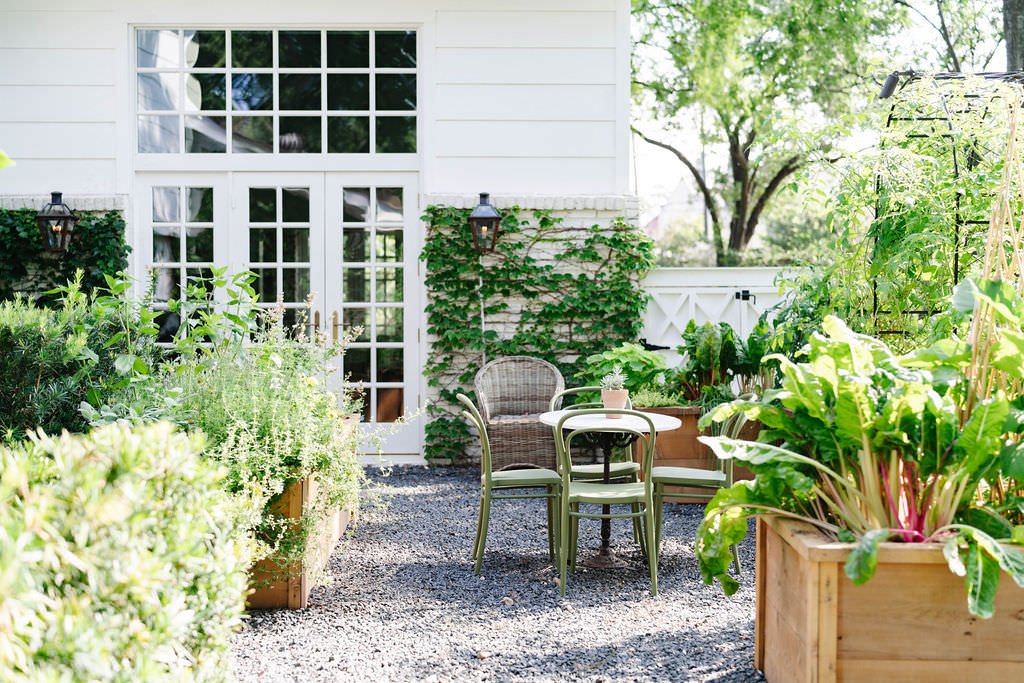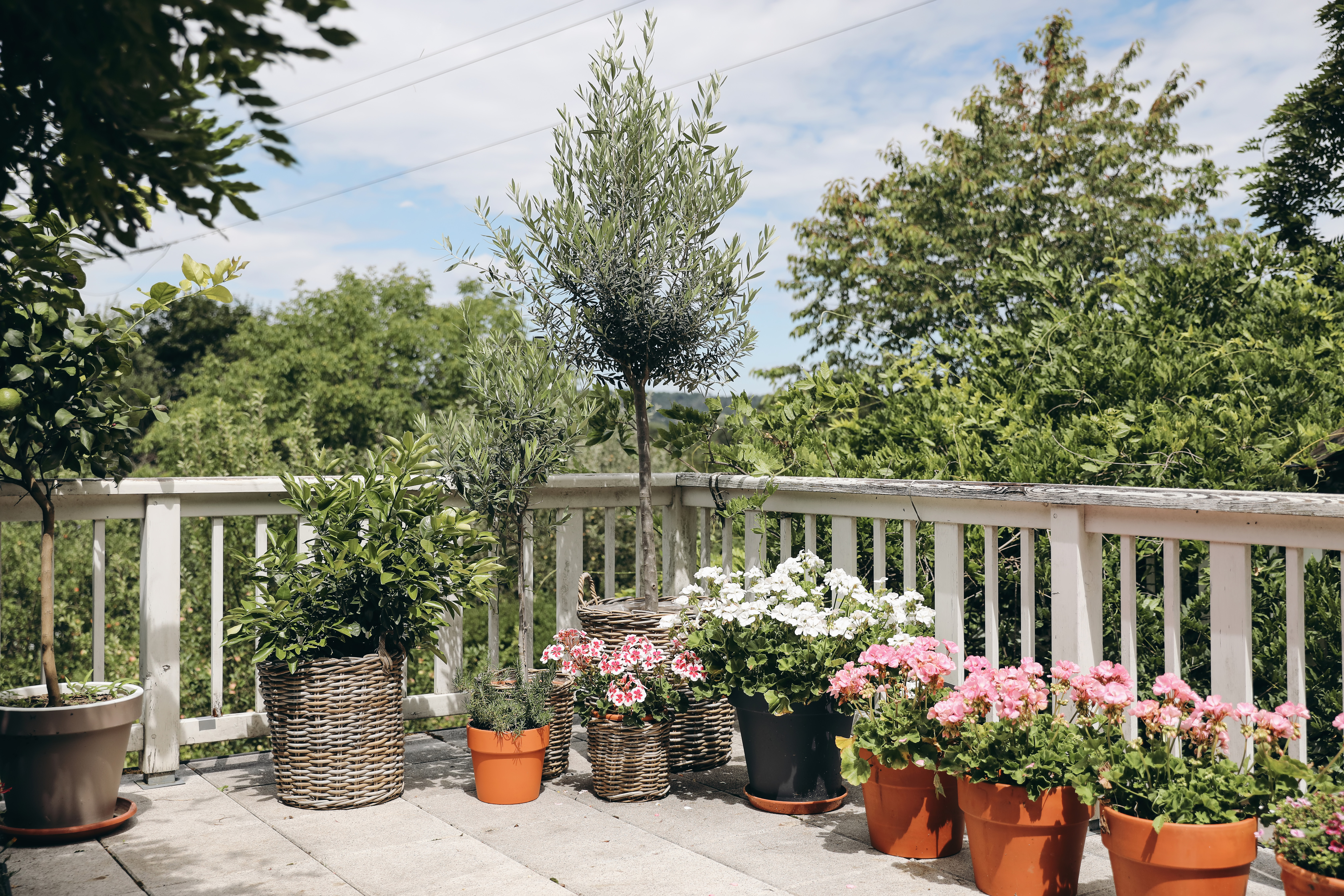
With the seasons changing and the winter freeze slowly approaching, it's important for green-thumbed and even beginner gardeners to protect and prepare their backyards for the upcoming frost — and so begins the process of winterizing a garden.
Much like overwintering your much-loved plants, winterizing your garden will allow you to protect and build up your garden's soil. It's an important part of preparing your shrubs, vegetables, and even flowers for a drop in temperature.
It's time to lay down some mulch and prepare your yard for the cold days. Here are five tasks to undertake to winterize a garden.
1. Clear out pipes, drains, and gutters

It's time to clean up your backyard, and the first step is to tackle the nitty-gritty gardening jobs.
"The first and most important thing to winterize in any garden is the outdoor faucets and sprinkler systems, so as to avoid any pipes freezing and bursting over winter," explains landscape design expert Amber Freda. According to Jordan Clough of Richardson & Associates Landscape Architecture, water is the number one cause of issues in the winter. "Remember to blow out irrigation systems and winterize pools, but you may also have to winterize any water lines to outdoor kitchens, or remote hose bibs," he says.
Pipes are not the only thing to worry about. As Amber goes on to explain, you'll also want to make sure any gutters and drains are cleared of debris. "This is so they continue to work properly over winter and don’t overflow," she says. Setting time aside for this home exterior trick is an easy way to save money on costly damage further down the line.
2. Mulch your plants

In areas where temperatures get quite low, the roots of your plants risk freezing which will stop the plants from blooming come spring. For this reason, many plants need an extra layer of protection through winter if you want your modern garden to flourish next year. If you're wondering how to mulch a garden, it's a whole lot easier than you might think.
"Add a nice thick layer of mulch to all perennial and shrub beds," says Jordan. "For many perennials, this is very important to keeping constant moisture around the roots and mitigating the temperature swings and extremes of the winter months while they are dormant — think of it as tucking them in for a winter's rest. This will certainly result in better, fuller, spring growth."
3. Prune and deadhead

It might be worth taking your pruning tools out and deadheading your plants this time of year. This is to ensure they don’t spread any diseases and to make them look tidier in the coming months. We're quite the fan of these Corona BP 3180D Forged Classic Bypass Pruners from Amazon. "Go ahead and prune back any dead flower blooms or overgrown plants so everything looks tidy in preparation for winter," advises Amber.
"Winter is a time when plant diseases can spread and further infect weak specimens made weaker during the winter months," Jordan adds. "Keep an eye out for any changes in the look of the plant's leaves, and see if you notice any infestation, making sure you remove it immediately." While he agrees it’s important to trim back any diseased plants, he urges you to check which plant you're cutting. Not all plants will benefit from a trim this time of year, especially if they've already entered their period of dormancy, so always double-check beforehand.
4. Fertilize (or don't...)

When it comes to fertilizing a garden and its soil, opinions are divided on this one. Amber advises you to stop fertilizing your plants to allow them to harden off before winter.
On the other hand, Jordan suggests applying a slow-release fertilizer to lawns and flower beds. "This will work its way into the soil over the winter months and be available for when your plants wake up in the spring," he explains. We'll leave it to you to decide whether your plants need a boost.
Looking to fertilize your soil? Try Jack's Classic 20-20-20 All Purpose Fertilizer from Walmart, priced at jst $19.89.
5. Protect the pollinators

We all want to do our part for the planet, and if you want to protect beneficial garden insects, you can offer them a place to hibernate over winter.
"They most frequently do this in piles of fallen leaves and in the remains of dormant plants," says Jordan. "If you have an area where you don't mind allowing leaves to stay over the winter, and you can leave some of the dry stalks of your perennials standing until spring, the native pollinators will greatly appreciate it!" After all, wildlife gardening isn't only about attracting pollinators in spring and summer.
Overwintering Vs Winterizing

Although both processes are quite similar and strive to protect your garden and plants from the cold, there is a slight difference between the two.
Tony O'Neill, a gardening expert from Simplify Gardening says winterizing is the process of getting your garden ready for winter, "which may involve tasks like mulching, covering plants, or adjusting your watering schedule."
And as for overwintering, the expert says this refers to maintaining plants during the winter, "whether indoors or outside, to ensure their survival and good health come spring."







